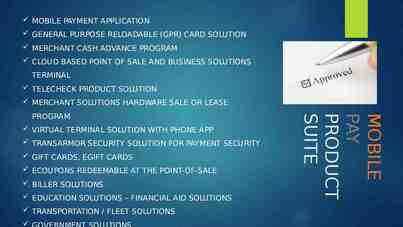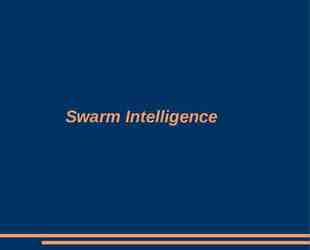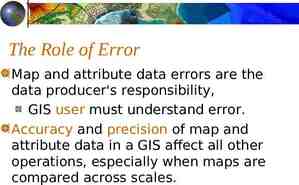Microsoft Virtual Server 2005 Technical Overview John Howard, IT Pro
34 Slides1.69 MB
Microsoft Virtual Server 2005 Technical Overview John Howard, IT Pro Evangelist, Microsoft UK http://blogs.technet.com/jhoward
Agenda Virtual Server 2005 Scenarios Virtual Server Migration Toolkit (VSMT) Virtual Server 2005 Architecture Demonstrations
Agenda Virtual Server 2005 Scenarios Virtual Server Migration Toolkit (VSMT) Virtual Server 2005 Architecture Demonstrations
Microsoft Virtual Server 2005 The most cost-effective virtual machine solution designed for Windows Server 2003 to increase operational efficiency VM VM VM VM VM VM VM VM VM VM VM VM VM VM VM VM VM VM VM VM VM VM VM VM Software test/development Consolidation/automation of a centrally managed server farm Simulation of distributed applications/services on a single system Migration and consolidation Legacy custom applications Departmental/branch office servers Disaster recovery sites Key Benefits: Improved hardware efficiency and increased productivity
Test/Development Scenario “Dev/Test-in-a-box” Fully-patched suite of test servers deployed from centrally-managed VM library Uniform regression testing WITH developer flexibility New application/service regression- tested across distributed interactivity prior to staging and production Customer benefit: lower risk, higher quality, faster deployments No packets hit the production network
Branch Office Scenario “Branch-in-a-box” Single Server in a Branch running various services. File and Print, DC, LOB applications. DC in a virtual machine on a guest operating system with application services running on the host operating system DC on the host operating system with application services running in a virtual machine on a guest operating system DC and applications running in virtual machines on separate guest operating systems with host operating system for administration only
Agenda Virtual Server 2005 Scenarios Virtual Server Migration Toolkit (VSMT) Virtual Server 2005 Architecture Demonstrations
VSMT Scenarios Application Rehosting Allows application to be moved to new hardware for better performance, reliability, and maintainability. Server Consolidation Consolidate multiple physical servers onto a smaller number of physical servers Each of the original physical servers runs in its own Virtual Machine to maintain application isolation, security, and operating system environment VSMT enables both scenarios by automating the migration of the operating system and installed applications from a physical server to a Virtual Server
VS Migration Toolkit Configure VM Run gatherhw.exe settings, network and storage configuration & VM additions Power off old hardware (Automatic) Manually PXE boot to ADS ut io n Deployment Agent, causing image to be captured W2K3 Server With Virtual Server 2005 & VSMT qu en ce ex ec “Old” Server se Move output Ta sk XML file to ADS controller Run generated CreateVM.cmd, which Run VMScript.exe to validate HW config and generate custom scripts Run generated capture.cmd executes a task sequence to create a Virtual Server on the Virtual Server Host Run generated DeployVM.cmd, which executes a task sequence to deploy the captured image to the new Virtual Server W2K3 Server with ADS 1.0 & VSMT
VSMT Toolkit Functionality Migrates physical server to Virtual Server (P2V) Moves entire operating system and installed applications by moving disk images Server retains its identity after the move Actual process takes around an hour per server after the planning and infrastructure setup is complete Targeted for use by IT professionals or by MCS Requires some scripting knowledge and Windows Server expertise Requires DHCP and ADS infrastructures
VSMT Prerequisites Microsoft ADS, runs on Windows Server 2003 Enterprise Edition Sufficient disk space on ADS Server to store images of servers during migration process Microsoft Virtual Server 2005 Sufficient resources (memory, disk, network) on the Virtual Server to support migrated systems Virtual Server and VSMT (with ADS) can be on the same box.
VSMT Requirements Physical source machine requirements Operating Systems NT Server 4.0 SP6a Windows 2000 Windows Server 2003 Minimum of 96MB of physical memory installed WMI must be installed and functional Primary NIC must be PXE 0.99c compatible and system must be able to perform a PXE boot, via ROM or RBFG disk
Migration Tips Before you start a migration, always: Verify adequate disk resources are available on the VS Host and ADS Image Servers Verify adequate memory resources are available on the VS Host Have access to a local admin-level account on the machine to be migrated Decide on a retention plan for the physical server and image captures
VSMT Limitations Limitations Servers with hardware not emulated in VS cannot be moved – E.G.: Parallel port dongle, USB, HBAs Physical servers with less than 96MB of memory cannot run migration tools (160MB if FAT partitions) Cannot migrate SAN data - must be copied manually Some hardware configurations will require manual intervention in the migration process, particularly with NT 4.0 Targeted for IT-Pros or consultants Requires some scripting knowledge Requires DHCP, PXE and ADS knowledge
Demo Virtual Server Migration Toolkit
Agenda Virtual Server 2005 Scenarios Virtual Server Migration Toolkit (VSMT) Virtual Server 2005 Architecture Demonstrations
Virtual Server 2005 Architecture Application Application Guest OS Guest OS Virtual H/W Virtual H/W x86/x64 server Up Uptoto32 32host hostCPUs CPUs Up Uptoto64GB 64GBhost hostRAM RAM VS VSleverages leveragesexisting existingsystem systemstorage, storage, networking and security infrastructure networking and security infrastructure Teamed TeamedNICs, NICs,teamed teamedHBAs HBAs VS VSStandard StandardEdition EditionOptimized Optimizedfor for Windows Server 2003 Standard Edition Windows Server 2003 Standard Edition (2-4P/32GB) (2-4P/32GB) VS VSEnterprise EnterpriseEdition EditionOptimized Optimizedfor for Windows Server 2003 Enterprise Edition Windows Server 2003 Enterprise Edition ( 8P/64GB) ( 8P/64GB) Support Supportfor forX64 X64OS OSdue dueininVirtual VirtualServer Server SP1 (32bit Guests) SP1 (32bit Guests)
Virtual Server 2005 Architecture Application Application Guest OS Guest OS Virtual H/W Virtual H/W x86/x64 server VS VSworks workswith withWindows: Windows: Heartbeat Heartbeatfrom fromkernel/ kernel/scheduler scheduler Windows WindowsDevice Devicedrivers drivers
Virtual Server 2005 Architecture Application Application Guest OS Guest OS Virtual H/W Virtual H/W Virtualisation Virtualisationinfrastructure infrastructure VM VMmonitor monitor COM COMAPI API Resource Resourcemanagement management WMI/event WMI/eventlog logintegration integration Multiple MultipleThreaded ThreadedSupport Support x86/x64 server
Virtual Server 2005 Architecture Application Application Guest OS Guest OS Virtual H/W Virtual H/W Industry-standard Industry-standarddevice devicemodels models Intel Intel440BX 440BXmotherboard motherboard Intel Intel21141 21141NIC NIC S3 S3Trio64 Trio64SVGA SVGAwith with2D 2D S3 Trio64 SVGA with 2D hardware hardwareacceleration acceleration IDE/ATAPI IDE/ATAPIcontroller controller Adaptec Adaptec2940 2940SCSI SCSI controller controller Legacy Legacydevices devices KBD, KBD,Mouse, Mouse,COM, COM, x86/x64 server LPT LPTports ports. . NO NOcustom customdrivers driversininguest guest
Virtual Server 2005 Architecture Guest GuestOS: OS: Runs Runsall allmajor majorx86 x86OSes OSes Application Application Guest OS Guest OS Virtual H/W Virtual H/W 3.6GB 3.6GBRAM RAM 44NICs NICs 56.5TB 56.5TBstorage storage(IDE (IDE-SCSI) -SCSI) 2-N 2-Nfailover failoverMSCS MSCSclustering clustering VM VMtotoVM VMsame sameVS VSHost Host Server Server SCSI SCSIlimits limitscluster clustersize size ISCSI ISCSIwill willsupport supportmore more cluster nodes and VM cluster nodes and VMtotoVM VM clusters across hosts. clusters across hosts. Supported SupportedGuest GuestOS OS x86/x64 server Windows WindowsServer Server2003 2003 Windows Windows2000 2000Server Server (NT (NT4.0 4.0Server Server) ) Guest Guestapplications: applications: NO NOrewriting, rewriting,retraining. retraining.
Virtual Server 2005 Components Web Server VM 1 VM 3 Administrative Interface Virtual Server CGI VM 2 DCOM IIS Service HTTPS VS Service Internet Explorer VMRC Client VMRC The Virtual Server 2005 user Interface is Web-based and has two components The Web Server – a CGI file uses the VS COM API to create the UI content The Administration Interface – a standard browser that displays the UI These components can reside remotely or locally to the VS service Can use HTTPS to communicate to web service VM user interaction is remoted using a Virtual Machine Remote Control (VMRC) link Uses NTLM or Kerberos authentication
Workload management features VM VM Web Webserver server VM Business Businesslogic logic CPU resource allocation policies wt: 100 wt: 100 max: 20% min: 5% max: 20% min: 10% Database Database wt: 100 max: 50% min: 25% Weighting policy enforces database SLA vis-à-vis other VMs Minimum reserve policy: other VMs not CPU-starved balanced workload Recommend reserve 1 CPU for VS host
Memory features in action VM VM Web Webserver server Business Businesslogic logic Total RAM: 4GB 1GB VM Database Database 1.5GB 512K No memory overcommit: running VMs’ RAM cannot exceed physical RAM Dynamic memory add/delete not currently supported Recommend 512MB VS host 15MB for VS service
Virtual Disk Drives IDE Up to four IDE drives (128GB per drive) SCSI Up to four SCSI controllers Up to seven drives per controller (2TB max per drive) Maximum 56 TB per VM .VHD files on host Created using Virtual Disk Manager
Virtual Disk Drives Dynamically expanding Fixed size Difference drive Read only parent file Changes written to a difference file Linked drive – Uses a physical drive Undo capability Saves all drive updates in special case, difference drives Updates committed or discarded at shutdown
Virtual Disk Drives Base virtual hard disk types Dynamically expanding vhds Default type: grows as needed Host 1GB Guest 2TB 2TB Fixed size virtual hard disks Highest performance type Host Guest 2TB 2TB Linked virtual hard disks Links a physical data disk to a virtual hard disk Host Guest State drive types Undo virtual hard disks Non-persistent, per-VM Differencing virtual hard disks Persistent parent-child hierarchy Saved states Flush memory to disk (like hibernation) BaseSession Base SP1 SP2 VM Host
Virtual Networks (VNs) VM1 VM2 VM3 Max four Virtual Networks per VM Internal Default Networks User created Networks Default installation Physical 1 One per physical NIC Physical 2 One with no NIC (Internal) User Create your own Example VM1 – the default internal and NIC1 networks VM2 – new internal network created; connects to it and the default NIC2 network VM3 – the default internal network, the NIC1 network and the new internal network Virtual networks with no NIC connected (Guests Only) All routing is performed local to Virtual Server A virtual DHCP server provides IP addresses to VMs on the network
Virtual Networks in action Virtual Virtual Networking Networking features features VM VM Web Webserver server VM Business Businesslogic logic Virtual NICS Database Database Virtual NICs Virtual DHCP Server Private virtual network Virtual Switch Virtual Switch Hardware Hardware server server Public external network Private internal network
Virtual Server Manageability Microsoft MicrosoftOperations OperationsManager Manager 2005 with the Management 2005 with the ManagementPack Pack for Virtual Server 2005 provides for Virtual Server 2005 provides industry-leading industry-leadingWindows Windowshealth health and performance monitoring and performance monitoring capabilities—a capabilities—afamiliar familiarinterface interface that your staff already knows. that your staff already knows. Microsoft MicrosoftAutomated AutomatedDeployment Deployment Services—included with Services—included withWindows Windows Server 2003 Enterprise Edition— Server 2003 Enterprise Edition— provides providesaapowerful powerfulunified unified interface for automated interface for automated provisioning provisioningand anddeployment deploymentof of both host and guest Windows both host and guest Windows OSes. OSes.
Summary Scenarios Test & Development Rehosting Flexible Capable of complex modelling scenarios Manageable VMRC/Admin Interface remote control Resource management Scripting Microsoft Operations Manager Management Pack
2004 Microsoft Corporation. All rights reserved. This presentation is for informational purposes only. MICROSOFT MAKES NO WARRANTIES, EXPRESS OR IMPLIED, IN THIS SUMMARY.
2004 Microsoft Corporation. All rights reserved. This presentation is for informational purposes only. MICROSOFT MAKES NO WARRANTIES, EXPRESS OR IMPLIED, IN THIS SUMMARY.
Microsoft Virtual Server 2005 Technical Overview John Howard, IT Pro Evangelist, Microsoft UK http://blogs.technet.com/jhoward







































